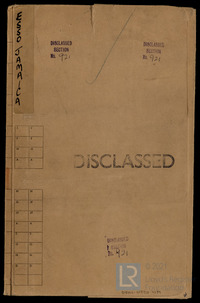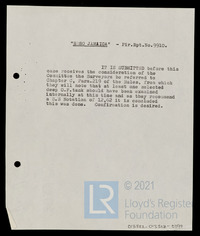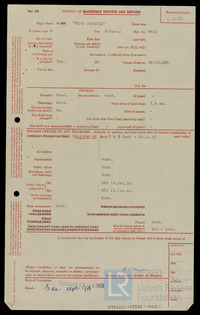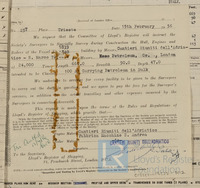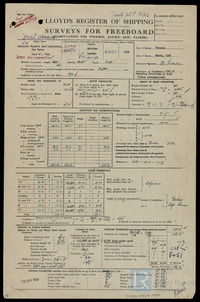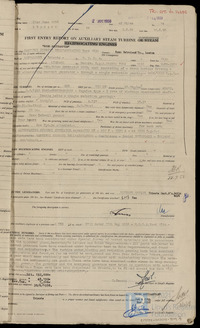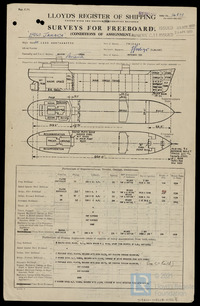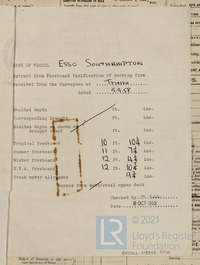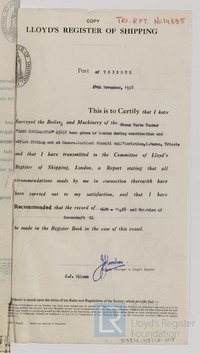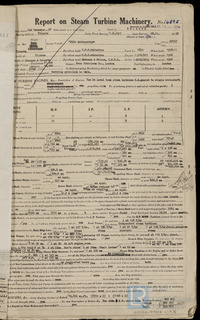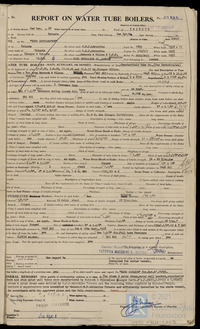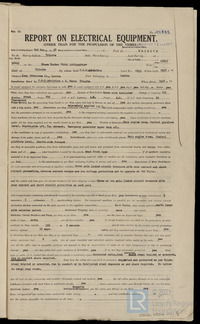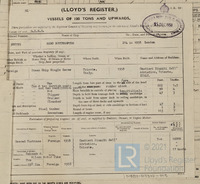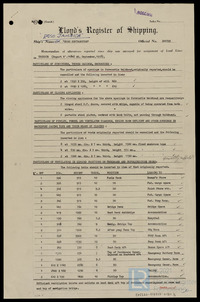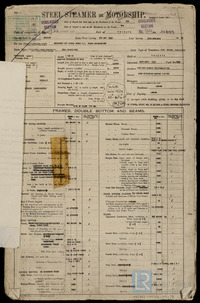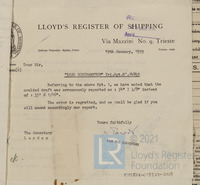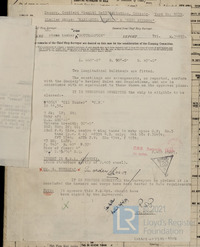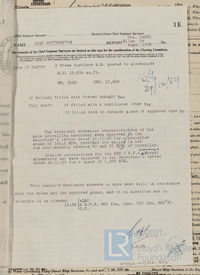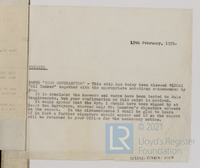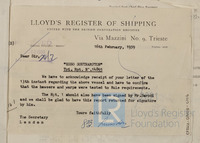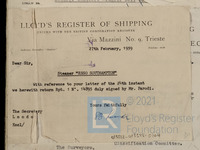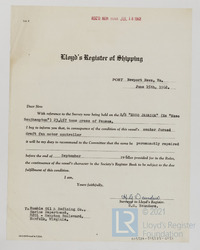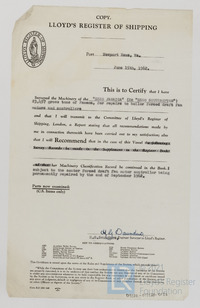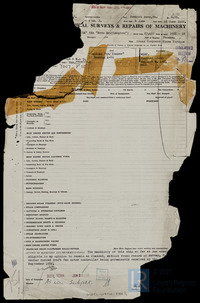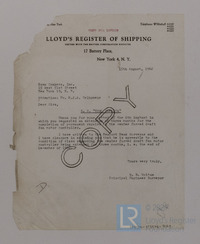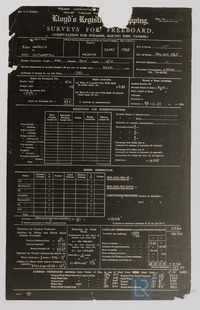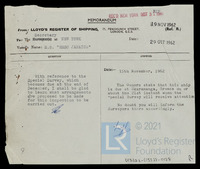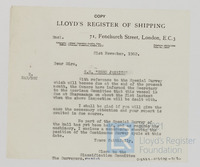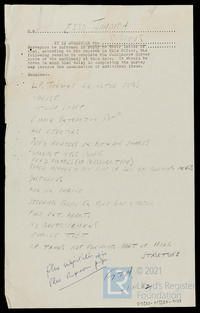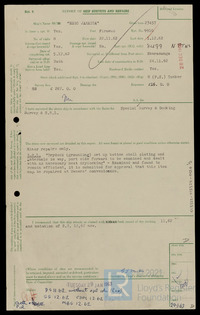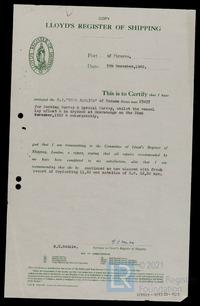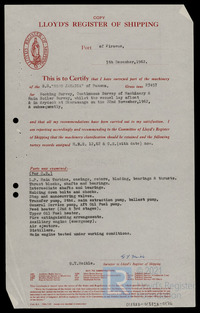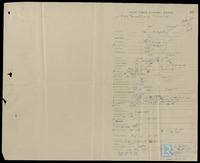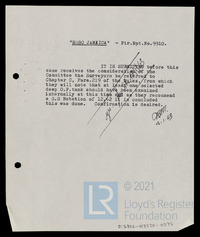- Related documents Related
- Full details Details
- Report document? Report?
Use the data export button to extract customised data sets from the Ship Plan and Survey Report Collection. Available in TSV and CSV formats.
Date recorded as the time of writing.
20/04/1964
The year in which a vessel’s construction is completed.
1958
The individual and/or organisation listed as having been responsible for constructing the vessel. This can/may be the same as the owner and/or manager.
Cantieri Riuniti Dell' Adriatico
The port or place in which the vessel’s construction took place, at the time of writing.
Trieste
Additional numbers that feature on a given record that may be used for identification.
HQ 1427
Records that constitute Lloyd’s Register’s first official encounters with a specific vessel, e.g. a survey report.
N
Date of the meeting of the Classing Committee.
24/04/1964
A vessel’s means of propulsion.
Steam
Is the steamer assisted by sail?
No
Confirmation as to whether the vessel was equipped with refrigeration machinery to aid in the transport of frozen or chilled cargo/goods.
No
Does the vessel possess an auxiliary power source?
No
Is electric lighting fitted to the vessel?
No
Physical extent of a record.
1
Name of ship as recorded on the record
Esso Jamaica
The process of transferring a vessel to water, but not necessarily her completion.
20/04/1958
Unique identifier for a given ship, it is assigned by a builder.
1839
Official administrative title (often printed) of a record used by Lloyd’s Register or external organisations.
Classing Committee Note
Other/additional record(s) specifically mentioned, referenced or associated to another record.
Piraeus 9910
Classification symbol assigned to a vessel by Lloyd’s Register’s Classing Committee denoting the quality of construction and maintenance.
Class withdrawn at owners request
Broad categories and subdivisions of vessels related to their purpose or function.
undefined
Predominant material(s) utilised in a vessel’s construction.
Steel
A ship’s total internal volume in ‘register tons’ (replaced by gross tonnage post 1982).
23457
Is machinery fitted at the aft of the vessel?
No
Generally a smaller additional auxiliary boiler (often used while the vessel is at port).
No
Name of the Proving House responsible for the public testing and certification of a vessel’s anchors and/or chain cables.
No
Report an issue with this document
Have you noticed missing or incorrect data or images for this document?
Please let us know and we will rectify the issue as soon as possible.


